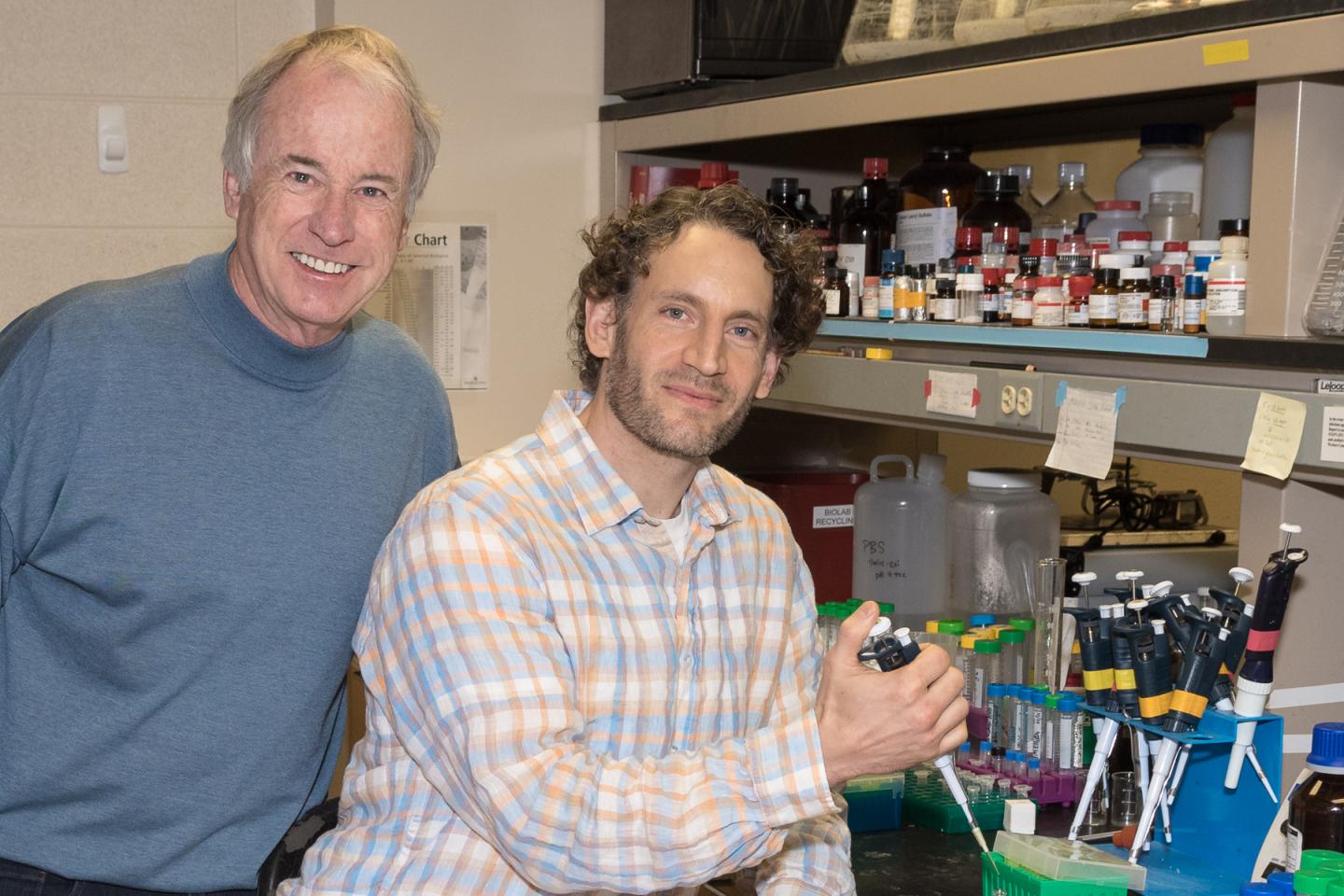
In a recent paper published in the journal Pain, Saint Louis University researchers describe their success in an animal model in turning off the excruciating pain that often accompanies a colorectal cancer drug.
Daniela Salvemini, Ph.D., professor of pharmacology and physiology at SLU, studies pain pathways, the series of interactions between molecular-level components that lead to pain in the body.
One type of pain she examines is chemotherapy induced neuropathic pain (CINP), a debilitating side effect of chemotherapy that can appear as tingling or numbness in the hands and feet, shooting or burning pain in the limbs, or can feel like hot or cold temperature extremes. In addition to causing patients suffering, CINP is often a limiting factor when it comes to treatment.
“Thanks to the increased efficacy of cancer treatment, there are nearly 14 million cancer survivors in the United States,” Salvemini said. “Many of these survivors suffer from long-term side effects of CINP, for which there are no proven strategies for prevention or treatment.
“This is a huge unmet medical need.”
In her current paper, Salvemini studied the platinum-based chemotherapy drug oxaliplatin which is widely used to treat colorectal cancer. Over 60 percent of patients who received oxaliplatin develop CINP, and it can last for years after treatment.
The research team found that the pain pathway associated with this drug was driven by increased expression of an enzyme, adenosine kinase, in astrocytes (a type of central nervous system cell) and decreased adenosine signaling at a key receptor, A3AR. By supplementing this signaling with A3AR agonists, the researchers were able to block the development of CINP without interfering with the anticancer properties of platinum based drugs.
These findings advance researchers’ understanding of pain pathways and provide new information about how drugs may be able to treat chemotherapy pain. Perhaps most encouraging, existing A3AR agonists currently are being studied in advanced clinical trials as novel anticancer agents. This paper makes a strong case for evaluating those drugs for use together with oxaliplatin to limit CINP while treating cancer.
Learn more: In Laboratory, SLU Scientist Turns Off Chemo Pain
The Latest on: Neuropathic pain
[google_news title=”” keyword=”neuropathic pain” num_posts=”10″ blurb_length=”0″ show_thumb=”left”]
via Google News
The Latest on: Neuropathic pain
- Pathophysiological Mechanisms of Neuropathic Painon May 8, 2024 at 5:00 pm
Neuropathic pain is a common problem in clinical practice and one that adversely affects patients' quality of life. Converging evidence from animal and human studies demonstrates that neuropathic ...
- How to Reduce Nerve Pain and Sciatica With Self-Massageon May 8, 2024 at 12:27 pm
Kerrie Bodendorf had back pain ever since she could remember. At age 30, she also developed debilitating sciatic nerve pain during pregnancy. The pain that resonated down her leg would force her to ...
- Treating neuropathic pain and nicotine dependence: Epibatidine derivatives as potential therapeuticson May 8, 2024 at 7:23 am
How to treat both neuropathic pain and nicotine dependence using novel epibatidine derivatives as potential therapeutics ...
- Diabetic Neuropathic Pain: Which Treatments Work?on May 7, 2024 at 5:00 pm
How can patients and clinicians effectively manage diabetic neuropathic pain in 2024? At the French Diabetes Society congress, three experts provided a comprehensive overview of the treatment for ...
- Postamputation and Chronic Neuropathic Pain After Combat Traumaon April 30, 2024 at 5:00 pm
—This systematic review of studies of combat injury was conducted to establish the prevalence of chronic neuropathic and postamputation pain following combat trauma. The prevalence of residual ...
- Top 5 Best Braces For Sciatica Nerve Pain in 2024on April 16, 2024 at 7:33 am
Sciatica nerve pain basically stands to be the most common condition affecting countless individuals in the world. It is generally produced by the pinching or compressed of the sciatic nerve which ...
- Neuropathic Pain News and Researchon February 4, 2024 at 4:00 pm
Researchers investigated the selective activity of sigmoid 2 receptor (σ2R) or transmembrane protein 97 (TMEM97) ligands on murine neuropathic pain models, their effects on nociceptive neurons ...
- Nerve Pain Managementon January 19, 2023 at 4:01 am
Let's face it ... nerve pain can REALLY get on your nerves. Sometimes it happens when nerves get compressed and irritated, causing a sharp, shooting pain. Or it could be from nerve damage ...
via Bing News










